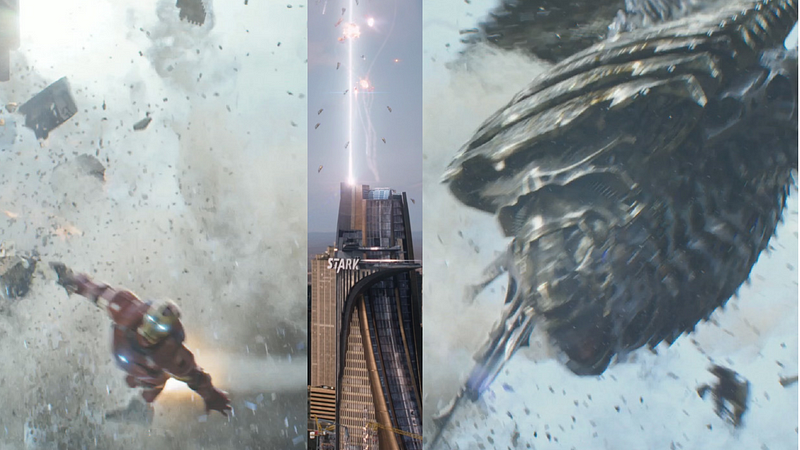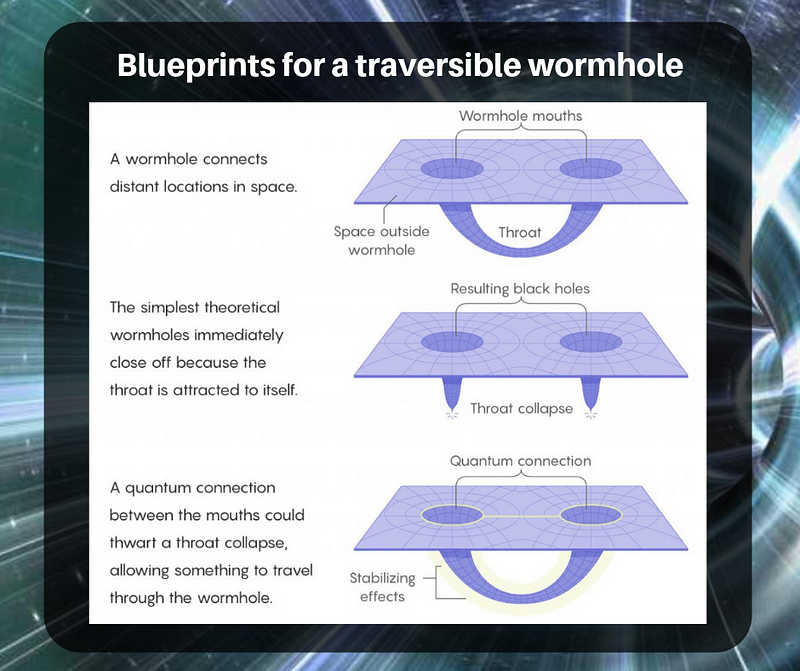# Exploring the Feasibility of Wormhole Travel: A Scientific Insight
Written on
Chapter 1: An Introduction to Wormholes
Wormhole travel is a concept that has intrigued scientists and science fiction enthusiasts alike. Harvard physicists propose that if slow wormholes are indeed real, traveling through these cosmic tunnels that connect distant areas of spacetime would be an incredibly sluggish process. Historically, wormholes have been the realm of science fiction, often depicted as gateways to distant worlds, yet they have always remained theoretical constructs.

In the cinematic universe, such as in The Avengers, Thanos uses a wormhole to send his Chitauri army to Earth, illustrating the dramatic potential of these phenomena. However, recent studies suggest that the reality of such travel could be painfully slow, making it less appealing for intergalactic journeys.
Section 1.1: Insights from Recent Research
A collaborative study conducted by Daniel Jafferis and Ping Gao of Harvard University, alongside Aron Wall from Stanford University, indicates that wormholes may indeed exist. Yet, the researchers caution against excitement; traveling from one side of the galaxy to another through a wormhole might be so time-consuming that traditional methods could prove more efficient.

At the April 2019 meeting of the American Physical Society, Jafferis remarked, “It takes longer to get through these wormholes than to go directly, so they are not very useful for space travel.” He emphasized that the true significance of this research lies in its implications for quantum gravity theory and understanding what happens to information that falls into a black hole.
Subsection 1.1.1: Theoretical Foundations
Jafferis’ exploration began with the idea of two entangled black holes at the quantum level, a concept previously introduced by Leonard Susskind and Juan Maldacena through the ER=EPR correspondence. He explains, “From an external viewpoint, traveling through the wormhole is akin to quantum teleportation using entangled black holes.”
Despite the seemingly shorter direct connection between two black holes, the time it takes to traverse a wormhole is longer, negating its potential as a shortcut.
Chapter 2: The Einstein-Rosen Bridge and Its Implications
The theoretical groundwork for Jafferis' proposition is rooted in a model devised by Einstein and Rosen in 1935, known as the 'Einstein-Rosen bridge.' This concept describes a connection between two black holes, and the term "wormhole" itself was coined in 1957 to encapsulate this interaction.
The first video titled "The Science of TIME TRAVEL to the PAST" delves into the fascinating realm of time travel and its theoretical implications, setting the stage for understanding wormholes.
As researchers like Jafferis suggest, wormholes could offer a unique way to extract information from black holes. He elaborates, “It provides a causal probe into regions that would otherwise be inaccessible, giving insight into the experiences of observers within spacetime from an external vantage point.”
Section 2.1: Overcoming Challenges
A significant challenge in creating traversable wormholes has been the requirement for negative energy, a notion that appears at odds with the principles of quantum gravity. Jafferis posits that examining quantum effects akin to the Casimir effect—where vacuum energy pushes together closely spaced materials—might help address this obstacle.
The second video titled "Time Travel with Wormholes Explained" elaborates on the mechanics of wormholes and their theoretical application in time travel scenarios, providing viewers with a clearer understanding of these complex concepts.
Jafferis concludes that further investigation into his theory and the potential creation of a wormhole could significantly influence our understanding of established scientific principles. “I believe it will reveal profound insights into gauge/gravity correspondence, quantum gravity, and perhaps even a novel formulation of quantum mechanics,” he states.